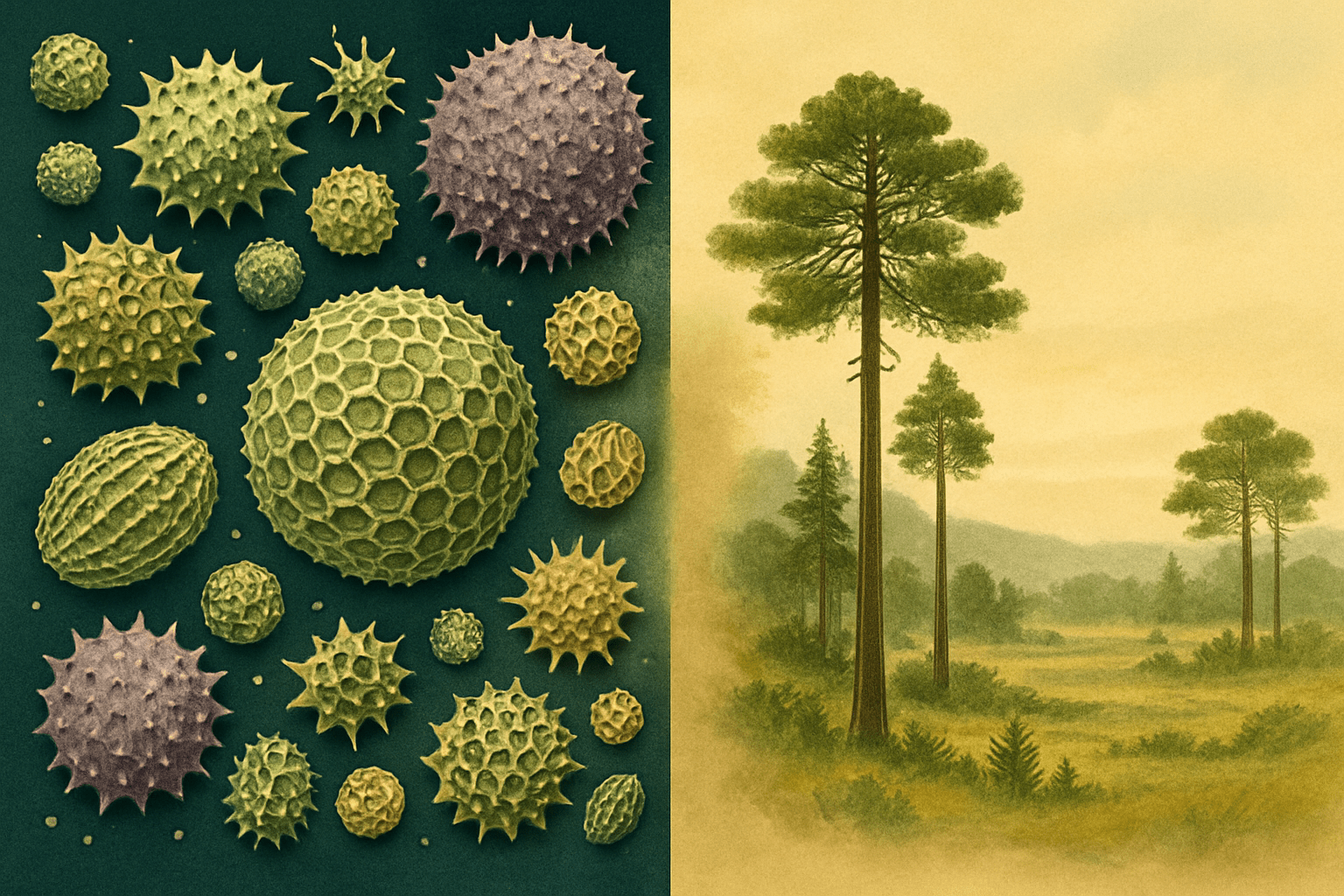The Science of Tiny Time Capsules
Every spring, plants release enormous clouds of pollen. While much of it fulfills its biological purpose, a significant amount settles on the ground, in rivers, and on the surface of lakes and bogs. This “pollen rain” creates a snapshot of the local vegetation for that year. As sediment accumulates season after season, it buries these pollen layers, creating a perfectly preserved, chronological archive.
The key to this incredible preservation is the pollen’s outer shell, the exine. Made of a substance called sporopollenin, the exine is one of the most durable organic materials known to science. It’s resistant to decay, pressure, and chemical degradation, allowing pollen grains to survive for tens of thousands, or even millions, of years in anaerobic (oxygen-free) environments like peat bogs and lakebeds.
Scientists extract this ancient pollen by taking core samples of sediment. By analyzing the pollen types and their abundance at different depths in the core, they can create a pollen diagram. This chart is a timeline that reveals exactly how the plant community—and by extension, the entire landscape and climate—has changed over centuries or millennia.
Mapping Ancient Worlds: Pollen and Physical Geography
One of the most powerful applications of palynology is in paleoecology—recreating past environments. Different plants produce uniquely shaped pollen, allowing scientists to identify them under a microscope. A layer rich in pine and spruce pollen points to a cold, boreal forest, while an abundance of oak and elm pollen suggests a warmer, temperate climate.
A classic example is the story of Europe after the last Ice Age. Around 20,000 years ago, much of the continent was covered in ice sheets or frozen tundra. Pollen records from this period are dominated by hardy grasses, sedges, and dwarf willows—plants capable of surviving harsh, cold conditions. But as the glaciers began to retreat around 15,000 years ago, the pollen diagrams tell a story of dramatic geographical transformation:
- The Pioneer Phase: The first trees to colonize the newly exposed land were resilient pioneers like birch and pine. Their pollen appears suddenly and in great numbers in the sediment cores.
- The Arrival of Temperate Forests: As the climate continued to warm, broadleaf trees that prefer milder conditions, like oak, elm, and hazel, began to spread north. Their pollen gradually replaces that of the cold-loving species.
- Climatic Setbacks: The pollen record also captures climatic blips, like the Younger Dryas stadial (c. 12,900 to 11,700 years ago), a brief but intense return to glacial conditions. During this period, tree pollen abruptly declines, and the pollen of cold-adapted herbs returns, showing just how sensitive landscapes are to climate shifts.
By studying these patterns across hundreds of sites, scientists can map the migration of entire forests across continents and build a detailed picture of past climate dynamics—a crucial tool for understanding our current climate change trajectory.
Tracing Human Footprints: The Geography of Agriculture
Pollen doesn’t just record natural changes; it keeps a meticulous diary of human activity. The shift from hunter-gatherer societies to agricultural communities—one of the most significant events in human geography—is clearly written in the pollen record. This anthropogenic signal marks the dawn of large-scale landscape modification by humans.
When the first Neolithic farmers arrived in a forested area of Europe around 6,000 years ago, their impact was immediate:
- Deforestation: There is often a sharp decline in tree pollen, particularly elm and oak, a phenomenon known as the “Elm Decline.” This indicates widespread forest clearance to create space for crops and pastures.
- The Appearance of Cultigens: For the first time, pollen from domesticated cereals like wheat and barley appears in the record.
- The Rise of Weeds: Alongside crops, the pollen of “ruderals”—weeds that thrive in disturbed ground, like plantain (Plantago) and sorrel (Rumex)—explodes in abundance.
By dating these shifts using radiocarbon dating, palynologists can track the spread of agriculture across continents with remarkable precision. We can see how farming started in the Fertile Crescent of the Middle East and gradually spread into Europe, forever altering its physical and human geography.
The Pollen on the Shoe: Forensic Palynology
The applications of palynology aren’t confined to the distant past. Sometimes, pollen helps solve very modern mysteries. In forensic palynology, pollen acts as a silent, microscopic witness, linking people, objects, and even bodies to specific geographical locations.
Every location has a unique “pollen fingerprint” based on its specific mix of local vegetation. If a suspect walks through a field of rapeseed and then commits a crime elsewhere, the distinctive rapeseed pollen on their shoes or clothing can directly link them to that field. This principle has been used in numerous criminal investigations.
One famous case in Austria involved a missing person. A suspect was identified, but there was no body. A search of the suspect’s boots revealed spruce pollen and a single, unusual grain of fossilized hickory pollen from the Miocene era. The only place in the region where modern spruce grew on soil containing these specific fossils was a small area north of Vienna. Police searched the location and found the victim’s body buried in a shallow grave, exactly where the pollen evidence suggested it would be.
Forensic palynology is also used to determine the geographical origin of illicit goods. Honey can be traced to its source country based on its pollen content, helping to identify fraudulent labeling. Similarly, the pollen found on packages of illegal drugs can sometimes reveal their country of origin or trafficking route.
The Power of the Microscopic
From the vast, icy landscapes of the Pleistocene to the specific soil on a criminal’s boot, palynology reveals worlds hidden in plain sight. It bridges physical and human geography, showing us how climate has shaped ecosystems and how humans, in turn, have reshaped the planet. These tiny, resilient grains of pollen are more than just botanical dust; they are a fundamental key to understanding the story of our world’s geography, one microscopic layer at a time.
